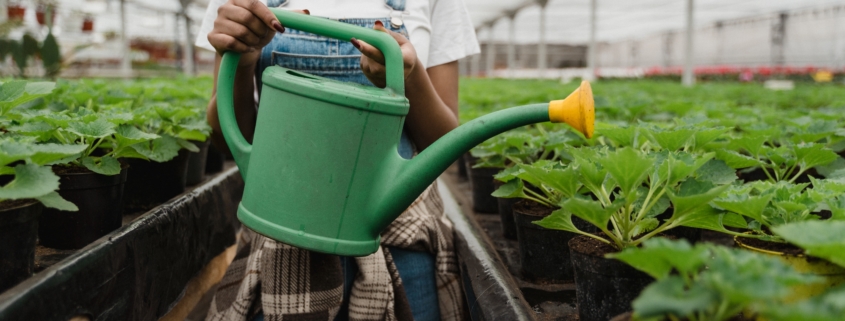
Water management – agricultural runoffs
Background: Current water management, water pollution and the associated risks
Water is one of the most fascinating and important resources we have on this planet. This impressive element is, as you know for sure, the basis of life for all ecosystems on earth. Water is never lost but goes through an eternal cycle in its three aggregate states. It is therefore even more important that we return clean water to this cycle. The consequences that polluted water can trigger in its cycle can be serious for humans and the environment. For example, fish produced or fished for human consumption have been found to contain excessive levels of human-caused heavy metals (7), which we humans then reabsorb by consuming the fish. In fact, management of water is an issue that has been with mankind for a long time: Water management already existed in ancient Egypt and the Roman Empire (6).
However, since the industrial revolution, water management has become even more important, as industrial production is responsible for drastically increasing and unnatural levels of pollutants in water (8). As shown in the fish example, human water pollution is a serious risk, also for our health.
Today, we have a centralized system in Germany that directs our wastewater to sewage treatment plants. But even this system is not ideally adapted to the reality of our economy: There is a risk that different types of wastewaters, and their pollutants, will mix and thus spread more widely (2).
In addition, the energy consumption of water treatment plants is enormous. Annually, wastewater treatment plants in Germany consume almost 4,400 gigawatt-hours of electricity per year, resulting in approximately 3 million tons of CO2 (5).
But there is also another challenge regarding water management: agricultural wastewater. In contrast to industrial or municipal waters, fewer water treatment solutions have been implemented for agricultural wastewater. This is because agricultural wastewater, apart from pesticide residues, contains high levels of nitrogen or nitrates due to fertilizers. Nitrogen, phosphorus, and nitrates are needed by plants to grow. However, if too much of these substances are made available to the plants, they cannot utilise it.
The consequence over the years is that the percentage of polluted wastewater from agriculture has risen sharply. Legal measures, such as the current Fertiliser Ordinance, have not had the desired effect – even today, nitrate and nitrogen levels in agricultural wastewater are too high. Also, phosphorus is, primarily in cattle breeding by the liquid manure, surplus. For humans, however, the excess of nitrates is particularly dangerous. Nitrate also partially enters our drinking water through wastewater, where a limit of 50mg/l has been set. But nitrate does not only find its way into our bodies through water but also through the agricultural harvest. In addition, studies show a connection of nitrate with colon cancer. (9; 10)
To mitigate risks such as these, adapted solutions must be implemented for agricultural wastewater, because agriculture is our food source that cannot be dispensed with. Agriculture must be sustainable.
Our solution vision
To put it another way: Water management has existed for a long time, but we need better-adapted solutions for agricultural water management. The opportunity we identify is a decentralised, nature-based solution. If farms could manage their own wastewater, many environmental benefits would occur: A load of pollutants in the regional and global water cycle would decrease, and in addition, farms would have the opportunity to reuse their water in a circular way, thus reducing their water consumption.
Thanks to biological processes, modelled on nature, water pollutants such as nitrates can be treated without chemicals, making them ideal for agricultural reuse. Adapted nitrate content in the water that feeds the crops reduces health risks, as no or little excess nitrate ends up in our drinking water and vegetables. In addition, methane can be collected in this biological process for local energy production. This lowers the carbon footprint of the farms and also gives them an economic advantage. It also reduces the high general electricity consumption of wastewater treatment plants.
You might also be interested in: Agrophotovoltaics – solar systems on agricultural land as a solution for energy and food supply
Sources
- https://www.oekosystem-erde.de/html/agrar-umwelt.html#staedte
- https://www.oekosystem-erde.de/html/wasserverschmutzung.html
- https://www.wasser-brv.de/trinkwasser/wasserkreislauf
- https://www.umweltbundesamt.de/daten/wasser/wasserressourcen-ihre-nutzung#wassernachfrage
- https://www.umweltbundesamt.de/sites/default/files/medien/1410/publikationen/uba_wasserwirtschaft_in_deutschland_2017_web_aktualisiert.pdf
- https://www.climate-service-center.de/imperia/md/content/csc/warnsignalklima/warnsignal_klima_wasser_kap1_1.11_fahlbusch.pdf
- https://www.sge-ssn.ch/media/Fisch_-_der_Spagat_zwischen_Gesundheit_und_Oekologie1.pdf
- https://www.planet-wissen.de/natur/umwelt/umweltverschmutzung/pwieindustriellerevolutionundumweltverschmutzung100.html
- https://www.bfr.bund.de/cm/343/nitrat_in_diaetetischen_lebensmitteln.pdf
- https://onlinelibrary.wiley.com/doi/full/10.1002/ijc.31306
- https://www.tandfonline.com/doi/abs/10.1080/09603123.2021.1914322



